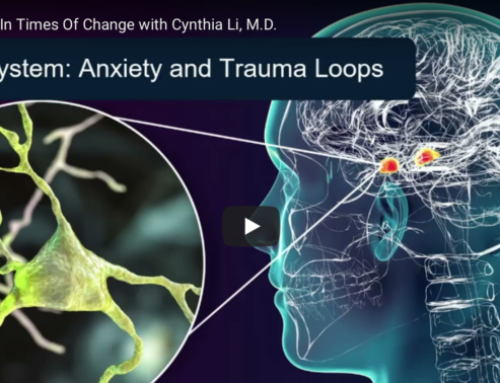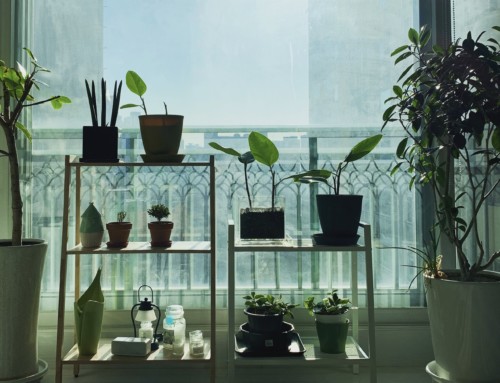Got brain fog? Mood imbalances? Adult acne? Chronic fatigue? I did. I also had chronic dizziness, insomnia, hypersensitivity to sounds, and other symptoms often dismissed. In the eleven years since my own diagnosis of Hashimoto’s thyroiditis, I learned how central detoxification is to maintaining good health, as well as to healing. From nutrition doctors like Mark Hyman, MD, prescribing detox diets and patients sharing their miraculous testimonials, to sites like Harvard Women’s Health Watch calling detox “a dubious practice,” how do we sort through the confusion? My journey as a patient forced me as a doctor to evaluate the science more closely.
Physiology Basics
When I use the term “detoxification,” I’m not referring to high-end spas or extreme juicing fasts, many of which can strain your budget or harm your body. Detoxification is simply the body’s innate capacity to filter and eliminate unwanted substances that would otherwise build up, generate “oxidative stress,” and contribute to chronic disease. We have several organs, or systems, that assist us with detoxification: the liver (the primary detox organ), the gut (where 70% of the immune system resides), the skin and respiratory system (primary defenses against environmental pollutants and harmful microorganisms), the immune system (lymphatic channels and nodes line the gut and respiratory systems), and the kidneys (urination and defecation are the two primary routes of elimination).
The Deeper Story
The matter of detox, like most things in life, is more complex and variable than what the textbooks say. That’s because of two simple facts: each of us is unique, and most of our detox systems aren’t optimized. Our individual capacity to detoxify depends on multiple factors: (1) the genes we inherited from our parents , (2) our cumulative exposure to environmental pollutants , (3) the health of our gut, (4) regular elimination via the gut and kidneys (5) the availability of key nutrients necessary for our liver enzymes and immune system to work properly, and (5) our age.
If we are what we eat, drink, breathe, touch, think, … and that which we can’t eliminate, what can we do?
There are 3 basic choices:
1. Reduce our personal exposures by making more informed choices
(www.ewg.org is a great resource to learn how to do this)
2. Advocate for industries to use safer alternatives
(www.healthandenvironment.org connects advocates to each other and to cutting-edge science)
3. Optimize our body’s innate detoxification processes
(see below)
10 Simple Steps to Detoxify
1. Sleep more. In the deep stages of sleep, lymphatic channels in the brain open up and flush out unwanted waste products, including beta-amyloid, which has been associated with Alzheimer’s Disease. (If you suffer from chronic insomnia, prioritize this with your health care practitioner.)
2. Eat your broccoli. Compounds in the Brassica family—kale, collards, beets, cauliflower, cabbage—boost your liver’s detox enzymes, while providing other nutrients and antioxidants. Steam them, boil them, or mix them into a smoothie. Most functional nutritionists recommend no more than 1 serving a day of cooked Brassicas to avoid the suppressive effect higher amounts may have on the thyroid.
3. Don’t skimp on protein. Amino acids like glycine boost your liver’s detox enzymes, and cysteine is a necessary cofactor for metallothioneins (proteins that detoxify heavy metals). Bone broth, beans, and wild, oily fish are good sources.
4. Increase your fiber. Aim for regular bowel movements, 1-2 times a day. If you’re constipated, biliary waste cannot be efficiently eliminated. And with gut flora imbalances, certain waste products may be reabsorbed into the blood stream despite the liver having previously filtered it out. Good sources of fiber: non-starchy vegetables, nuts, seeds, flaxseed meal, and beans. Fiber supplements like psyllium or rice bran are alternative choices (~30 g per day + plenty of water).
5. Sweat. Exercise and sauna more. Ubiquitous environmental pollutants like phthalates and PCBs (perfluorinated compounds) have been found to be excreted in sweat. Stay well hydrated and shower off with Castille soap, like Dr. Bronner’s.
6. Take a walk in a forest. Studies show this simple exercise reduces stress, improves sleep, and boosts the immune system, all of which facilitate detoxification. If there is no forest close by, take a walk in nature. The wellness benefits may be increased by taking your shoes off.
7. Heal toxic relationships. Easier said than done, but consider joining a support circle or a community forum, or starting therapy sessions. The connection between personal relationships and the immune system is one of the most robust findings in psychoneuroimmunology.
8. Have a cup of green tea. A compound in green tea (EGCG) can boost liver enzymes and also provide antioxidants to combat oxidative stress. Drinking green tea with each meal may help combat oxidative stress that comes from our meals. Opt for decaffeinated green tea if you’re sensitive to caffeine or have sleep difficulties.
9. Eat food your grandmother or great-grandmother would have recognized. A whole foods, largely plant-based diet is the foundation for good health, including improved detoxification. Nothing manufactured can match the natural foods our bodies have evolved with.
10. Laugh regularly. Imbalances in thyroid hormones can rob you of simple pleasures, so watch a funny video, play with your dog or child, even fake a laugh (studies show the effects on the body are the same as a real laugh). Laugh while you take your daily thyroid prescription! Laugh while doing #s 1-9 above, too! Laughing boosts circulation, eases digestion, and improves sleep, among other benefits.
Superfoods that Support Detox
Foods rich in omega-3 fatty acids: wild salmon, walnuts & almonds, flax seeds freshly ground, avocado
Fruits and vegetables high in antioxidants: berries, kale, cabbage, tomatoes, citrus fruits, parsley, cilantro
Foods high in natural fiber: steel-cut oats, legumes, flaxseed meal, fruits & non-starchy vegetables
Herbs & spices: turmeric, fresh garlic, cumin, horseradish, ginger
References:
Bremner I, Beattie JH. Metallothionein and the Trace Minerals. Annu Rev Nutr, 1990. 10:63-83
Durnas C, Loi DM, Cusack BJ. Hepatic Drug Metabolism and Aging. Clin Pharmacokinet, 19(5): 359-89, Nov 1990.
Genuis S, et al. Biomonitoring and Elimination of Perfluorinated Compounds and Polychlorinated Biphenyls through Perspiration: Blood, Urine, and Sweat Study. ISRN Toxicology, Vol 2013.
Jessen NA, et al. The Glymphatic System: A Beginner’s Guide. Neurochem Res, 40(12):2583-99, Dec 2015.
Kiecolt-Glaser JK , et al. Close Relationships, Inflammation, and Health. Neurosci Biobehav Rev, 35(1): 33-38, Sept 2010.
Li Q. Effect of Forest Bathing Trips on Human Immune Function. Environ Health Prev Med, 15(1):9-17, Jan 2010.
Mora-Ripoll R. The Therapeutic Value of Laughter in Medicine, Altern There Health Med, 16(6):56-64, Nov-Dec 2010.
Mwenifumbo JC, Tyndale RF. Genetic Variability in CYP2A6 and the Pharmacokinetics of Nicotine. Pharmacogenomics, Vol 8, No 10, 1385-1402, Oct 2007.
Solomon GS, et al. Cumulative Environmental Impacts: Science and Policy to Protect Communities, Annual Review of Public Health, Vol 37: 83-96, Mar 2016.
Vahter M. Genetic Polymorphism in the Biotransformation of Inorganic Arsenic and its Role in Toxicity. Toxicology Letters. Vol 112-113, 209-217, 15 Mar 2000.
van Poppel G, et al. Brassica Vegetables and Cancer Prevention. Advances in Nutr and Cancer 2, Vol 472, 159-168.
Xie HG, et al. Genetic Variability in CYP3A5 and its Possible Consequences. Pharmacogenomics, Vol 5, No 3, 243-272, Apr 2004.
Yao HT, et al. Protective Effects of EGCG Against Acetaminophen-Induced Liver Injury in Rats, Biomedicine, 5(3):15, Sep 2015.





